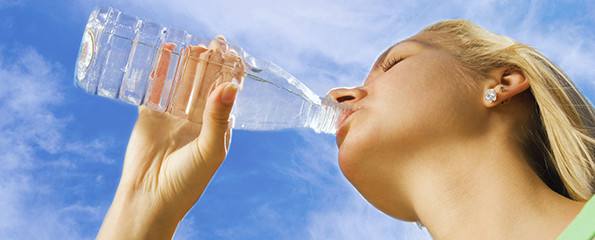When the spin doesn’t hold water
We often hear recommendations we should drink two litres, sometimes even three litres of water a day. But there’s just one simple rule that all health authorities, including Kidney Health Australia, agree on; drink to satisfy your thirst – no more, no less.
Adelaide-based urogynaecologist Dr Ian Tucker, who advises the Continence Foundation of Australia on a range of health issues, says there is no scientific evidence to suggest drinking more water than the amount required to satisfy our thirst has any health benefits. In fact, excessive fluid intake can be dangerous if taken to extremes.
It’s a simple case of arithmetic, he explains; we need to take in enough fluid to make up for the amount we lose each day, which is normally around two litres (1.5 litres as urine and the rest as perspiration and water vapour).
If we include the approximate one litre of fluid we take through food each day (based on a normal diet of fruit, vegetables, cereal etc.), this leaves us with about one litre to make up – roughly six tea cups or small glasses.
Exceptions include drinking more on hot days or when exercising strenuously, but even then, the urine output should still be approximately 1.5 litres a day.
Dr Tucker’s recommendations are backed by Kidney Health Australia, which has a position statement on the issue.
Urine colour, which should be pale lemon, is another good indicator of adequate fluid intake. Any liquids (including tea and coffee) are suitable for hydration, Dr Tucker adds, with alcohol (a diuretic), the only exception.
Dr Tucker also warns against excessive fizzy or caffeine-based drink intake, which can trigger urge incontinence in people with bladder dysfunction.
For advice on any incontinence, bladder or bowel issues, phone the National Continence Helpline (1800 33 00 66) or go to continence.org.au
Take into consideration:
- Excessive urine output (polyuria), which leads to excessive thirst, may be an indication of diabetes. Seek medical advice if this is the case.
- Older people may not get strong thirsty signals from the brain, putting them at risk of dehydration, and so should be reminded to drink. However, urine output should remain about 1.5 litres a day.
(Source: Continence Australia)
Dates
Tags
Created by:

 Login
Login














